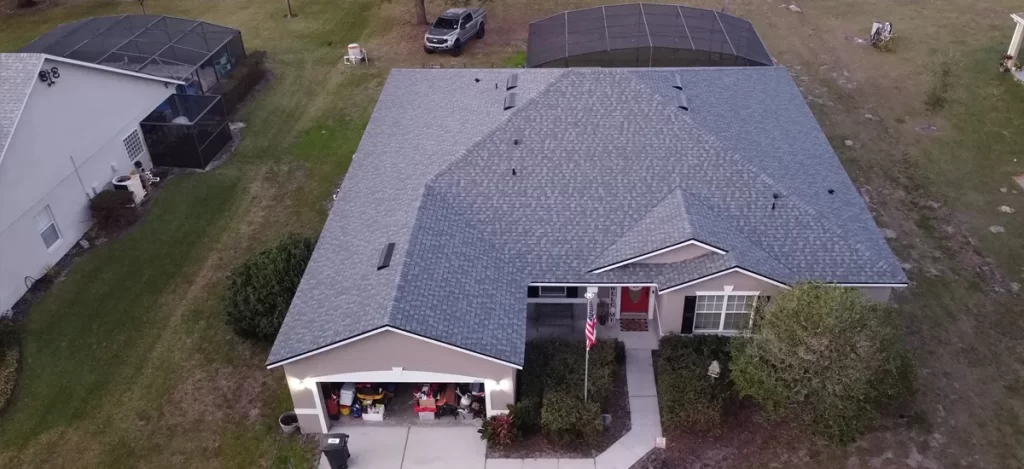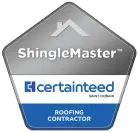Latest Innovations in Storm-Resistant Roofing Technology
Introduction
The increasing frequency and intensity of storms have made the need for robust, storm-resistant roofing technology more critical than ever. Advances in materials science, engineering, and design have led to remarkable innovations that can significantly enhance the resilience of roofs against harsh weather conditions. This article explores the latest innovations in storm-resistant roofing technology, providing homeowners and builders with insights into the best options for protecting properties from storm damage.
The Importance of Storm-Resistant Roofing Technology
Storm-resistant roofing is essential in safeguarding homes and buildings from the devastating effects of severe weather. Roofs are the first line of defense against elements such as high winds, heavy rains, hail, and flying debris. Traditional roofing materials often fail under extreme conditions, leading to costly repairs and endangering the safety of inhabitants. Therefore, investing in advanced storm-resistant roofing technologies is a prudent choice for any property owner.
Cutting-Edge Materials for Storm-Resistant Roofs
Impact-Resistant Shingles
One of the latest innovations in storm-resistant roofing is the development of impact-resistant shingles. These shingles are designed to withstand the force of hailstones and flying debris without cracking or breaking. Made from advanced polymer blends and reinforced with fibers, they offer superior durability and longevity.
Metal Roofing Solutions
Metal roofing has long been known for its durability, but recent advancements have made it even more storm-resistant. Modern metal roofs are engineered to resist high winds and impact from debris. Coatings and finishes have also improved, making metal roofs more resistant to corrosion and UV damage.
Composite Roofing Materials
Composite materials, made from a blend of traditional roofing materials and advanced polymers, offer exceptional storm resistance. These materials are designed to mimic the appearance of wood, slate, or clay tiles while providing enhanced durability and resistance to impact and wind.
Innovative Roof Designs and Structures
Aerodynamic Roof Shapes
Innovative roof designs that incorporate aerodynamic principles can significantly reduce wind uplift during storms. Roofs with curved or sloped shapes allow wind to flow more smoothly over the surface, reducing the chances of damage from high winds.
Reinforced Roof Decking
Reinforced roof decking involves the use of additional layers of plywood or other materials to strengthen the roof structure. This technique enhances the roof’s ability to withstand heavy loads from snow or debris and prevents damage from wind uplift.
Interlocking Roofing Systems
Interlocking roofing systems are designed to provide a more secure and stable roof structure. These systems use specially designed tiles or panels that lock together, reducing the likelihood of displacement during high winds and storms.
Advanced Installation Techniques
Adhesive Application Methods
The use of advanced adhesives in roof installation can significantly improve the storm resistance of roofing materials. These adhesives create a stronger bond between the roofing materials and the underlying structure, reducing the risk of detachment during storms.
Enhanced Fastening Systems
Enhanced fastening systems, such as hurricane clips and ring-shank nails, provide additional security for roofing materials. These systems are designed to hold roofing materials more securely in place, preventing them from being blown off during high winds.
Seamless Roofing Systems
Seamless roofing systems eliminate the weak points created by seams and joints in traditional roofing. By using continuous membranes or large panels, these systems provide a more uniform and resilient surface that is less susceptible to leaks and damage.
Smart Roofing Technologies
Sensor-Embedded Roofs
Sensor-embedded roofs are a cutting-edge innovation that integrates sensors into the roofing materials. These sensors can monitor various conditions, such as temperature, moisture levels, and structural integrity, providing real-time data to homeowners and maintenance teams.
Automated Roofing Systems
Automated roofing systems use advanced technology to adjust to changing weather conditions. For example, some systems can automatically close vents or deploy protective covers when a storm is detected, enhancing the roof’s overall resilience.
Reflective and Insulating Technologies
Reflective roofing materials can help reduce heat absorption, while insulating technologies can maintain stable interior temperatures. Both innovations contribute to the overall durability and energy efficiency of storm-resistant roofs.
Environmental Considerations in Storm-Resistant Roofing
Sustainable Roofing Materials
The use of sustainable materials in storm-resistant roofing is becoming increasingly important. Options such as recycled metal, reclaimed wood, and eco-friendly polymers not only provide durability but also reduce the environmental impact of roofing projects.
Green Roofs and Stormwater Management
Green roofs, which incorporate vegetation and soil layers, offer additional benefits for storm-resistant roofing. These roofs can absorb and manage stormwater, reducing runoff and mitigating the risk of flooding. Additionally, green roofs provide insulation and contribute to the overall resilience of the building.
Energy-Efficient Roofing Solutions
Energy-efficient roofing solutions, such as cool roofs and solar-integrated roofs, provide dual benefits of storm resistance and energy savings. These roofs are designed to reflect more sunlight and absorb less heat, reducing the strain on cooling systems and lowering energy bills.
Case Studies of Successful Storm-Resistant Roofing Implementations
Residential Applications
In recent years, numerous residential properties have successfully implemented storm-resistant roofing technologies. Case studies show that homes with impact-resistant shingles or metal roofs have fared significantly better during storms compared to those with traditional roofing materials. Homeowners report fewer instances of damage and lower repair costs, highlighting the effectiveness of these innovations.
Commercial and Industrial Applications
Commercial and industrial buildings have also benefited from advanced storm-resistant roofing technologies. For instance, warehouses and factories with reinforced roof decking and interlocking systems have demonstrated superior performance in severe weather conditions. These buildings maintain structural integrity and protect valuable inventory and equipment, underscoring the importance of investing in robust roofing solutions.
Public Infrastructure and Community Buildings
Public infrastructure, such as schools and community centers, has also embraced storm-resistant roofing technologies. These buildings often serve as shelters during emergencies, making it crucial to have reliable roofs. Examples include the use of sensor-embedded roofs in community centers, which provide real-time data to ensure safety and prompt maintenance.
Future Trends in Storm-Resistant Roofing Technology
Nanotechnology in Roofing Materials
Nanotechnology is poised to revolutionize storm-resistant roofing materials. By incorporating nanoparticles, manufacturers can enhance the strength, durability, and weather resistance of roofing materials. These advancements could lead to even more resilient roofs that can withstand the harshest conditions.
Advanced Composite Materials
The development of advanced composite materials will continue to play a significant role in storm-resistant roofing. Research is focused on creating composites that are lighter, stronger, and more adaptable to different environmental conditions, providing greater flexibility and performance.
Integration of Renewable Energy
The integration of renewable energy sources, such as solar panels, into storm-resistant roofs is an emerging trend. Solar-integrated roofs not only provide energy savings but also enhance the structural integrity and resilience of the roof. This dual functionality makes them an attractive option for eco-conscious homeowners and businesses.
Maintenance and Inspection of Storm-Resistant Roofs
Regular Roof Inspections
Maintaining the integrity of a storm-resistant roof requires regular inspections. These inspections should be conducted at least twice a year and after any significant weather event. During inspections, professionals should check for signs of wear, damage, and potential weak points that could compromise the roof’s performance.
Preventive Maintenance Strategies
Preventive maintenance strategies, such as cleaning gutters, trimming overhanging branches, and removing debris, are essential for prolonging the life of a storm-resistant roof. These measures help prevent damage and ensure that the roof remains in optimal condition to withstand storms.
Professional Repairs and Upgrades
When damage is detected, it is crucial to engage professional roofing contractors for repairs and upgrades. Attempting DIY repairs can lead to further damage and compromise the roof’s storm resistance. Professionals have the expertise and tools to address issues effectively and ensure the roof remains robust.
Cost Considerations and Financial Benefits
Initial Investment vs. Long-Term Savings
While storm-resistant roofing technologies may require a higher initial investment, the long-term savings are substantial. These roofs reduce the need for frequent repairs and replacements, lower insurance premiums, and protect against costly damage from storms. Homeowners and businesses can achieve significant financial benefits over the roof’s lifespan.
Insurance Discounts and Incentives
Many insurance companies offer discounts and incentives for properties with storm-resistant roofing. These benefits can offset the initial costs and provide ongoing savings. Homeowners should consult with their insurance providers to explore available options and maximize their financial advantages.
Increasing Property Value
Investing in storm-resistant roofing technology can increase property value. Prospective buyers are often willing to pay a premium for homes and buildings with advanced roofing systems that offer enhanced protection and durability. This added value makes storm-resistant roofing an attractive investment for property owners.
The Role of Building Codes and Standards
Evolving Building Codes
Building codes and standards are continually evolving to address the growing need for storm-resistant construction. These codes set minimum requirements for roofing materials, installation methods, and structural designs to ensure buildings can withstand severe weather conditions.
Compliance and Certification
Compliance with building codes and obtaining certification for storm-resistant roofing can enhance a property’s resilience and marketability. Certified roofs provide assurance to homeowners, buyers, and insurance companies that the roof meets rigorous standards for storm resistance.
The Future of Building Regulations
As the frequency and intensity of storms continue to increase, building regulations are likely to become more stringent. Future regulations may mandate the use of advanced storm-resistant roofing technologies in certain areas, driving further innovation and adoption of these solutions.
Conclusion
The latest innovations in storm-resistant roofing technology offer unprecedented protection for homes and buildings against severe weather conditions. By investing in advanced materials, innovative designs, and cutting-edge installation techniques, property owners can significantly enhance the resilience of their roofs. These technologies not only provide immediate benefits in terms of durability and safety but also offer long-term financial advantages. As research and development continue to drive progress, the future of storm-resistant roofing holds even greater promise for safeguarding properties and ensuring peace of mind.
FAQs
What are the main benefits of storm-resistant roofing technology?
Storm-resistant roofing technology provides enhanced protection against high winds, heavy rain, hail, and flying debris, reducing the risk of damage and costly repairs.
How do impact-resistant shingles differ from traditional shingles?
Impact-resistant shingles are made from advanced polymer blends and reinforced with fibers, making them more durable and resistant to cracking and breaking compared to traditional shingles.
What is the advantage of using metal roofing for storm resistance?
Metal roofing is highly durable and engineered to resist high winds and impact from debris. Modern metal roofs also have improved coatings that make them more resistant to corrosion and UV damage.
Can green roofs help with stormwater management?
Yes, green roofs can absorb and manage stormwater, reducing runoff and mitigating the risk of flooding. They also provide insulation and enhance the building’s overall resilience.
How often should storm-resistant roofs be inspected?
Storm-resistant roofs should be inspected at least twice a year and after any significant weather event to check for signs of wear, damage, and potential weak points.
What financial benefits can homeowners expect from investing in storm-resistant roofing?
Homeowners can expect long-term savings from reduced repair costs, lower insurance premiums, and increased property value. Some insurance companies also offer discounts and incentives for storm-resistant roofing.














